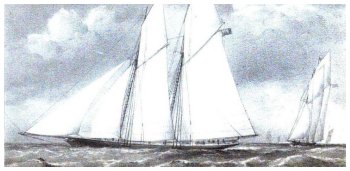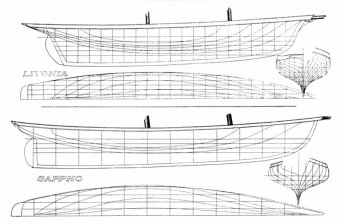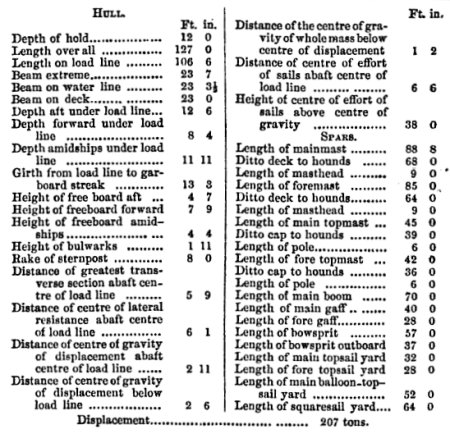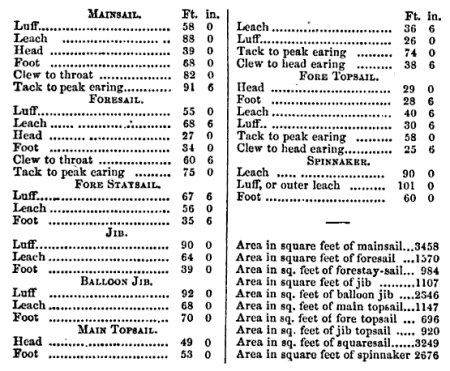Yves GARY Hits: 5694
Category: LIVONIA
 Hunt's Yachting Magazine - Mai 1871
Hunt's Yachting Magazine - Mai 1871It is now just twenty years since the old America gave us such a lesson, yet until the last few days we have never had a vessel of great structural stability and small displacement which were the essential elements used in the construction of the America, and enabled her to make such an example of the English schooners of that day.
At length however we have such a vessel in the Livonia, which was launched on the 6th of April, and we see in her the only combination by which we can hope to reverse the running of 1851, and bring back the Cup then lost to England.
The Livonia is clearly an advance in the right direction, and Mr. Ratsey has plunged fearlessly into small displacement and his new vessel may be considered a cross between the Sappho, which may be looked upon as the pick of the American basket,  and the Cambria which is a very fair representation of the English racing schooner. The difference between the Sappho and the Livonia consists in the greater length in proportion to beam of the English yacht, and of the latter having somewhat less hollow in her midship section which gives more room for ballast immediately above the keel, where of course you have the greatest leverage, thus gaining it is supposed more stability than she loses by her lesser beam, and getting a finer entrance and run by her greater proportioned length than the Sappho, and it will certainly be a most interesting trial between the two.
and the Cambria which is a very fair representation of the English racing schooner. The difference between the Sappho and the Livonia consists in the greater length in proportion to beam of the English yacht, and of the latter having somewhat less hollow in her midship section which gives more room for ballast immediately above the keel, where of course you have the greatest leverage, thus gaining it is supposed more stability than she loses by her lesser beam, and getting a finer entrance and run by her greater proportioned length than the Sappho, and it will certainly be a most interesting trial between the two.
The Livonia has to some extent been described in our number of November last, but we may repeat that she has a full round midship section, which will make her weatherly to a degree, while the great hollow below causes much less displacement low down, and where the water is heavier to move, than is the case with any other English vessel we know of, while the Livonia's fine entrance and run carry out the principle of small displacement to perfection.
weatherly to a degree, while the great hollow below causes much less displacement low down, and where the water is heavier to move, than is the case with any other English vessel we know of, while the Livonia's fine entrance and run carry out the principle of small displacement to perfection.
The Livonia has rather a low free-board, her deck being only four feet from the water line and her bulwarks, of two feet, are again lower than the generality of those given to vessels of her size, but they combine together to give her a very smart and rakish appearance on the water. She is rigged like all the schooners of the present day, but carries rather a smaller foresail in proportion to her mainsail than many others; she has the cutter bowsprit which has proved to be superior to the old standing bowsprit and jib boom in many if not in all respects, and though of course she carries less canvas than the Sappho yet in proportion to actual displacement she carries more, and it is on this point that we rest our hopes of her being able to beat the Sappho.
The Livonia has a gilt moulding running round her, and an Eagle for a figurehead. The floor timbers are of iron, fittings of fir, painted white, with gilt mouldings round her panels. The name of her builder is a sufficient guarantee that she has been built in the strongest manner, and her accommodations of the most convenient arrangement.
The following are the dimensions of her hull, spars and sails, which are of American cotton, and manufactured by Mr. C. Ratsey:
 |
 |
